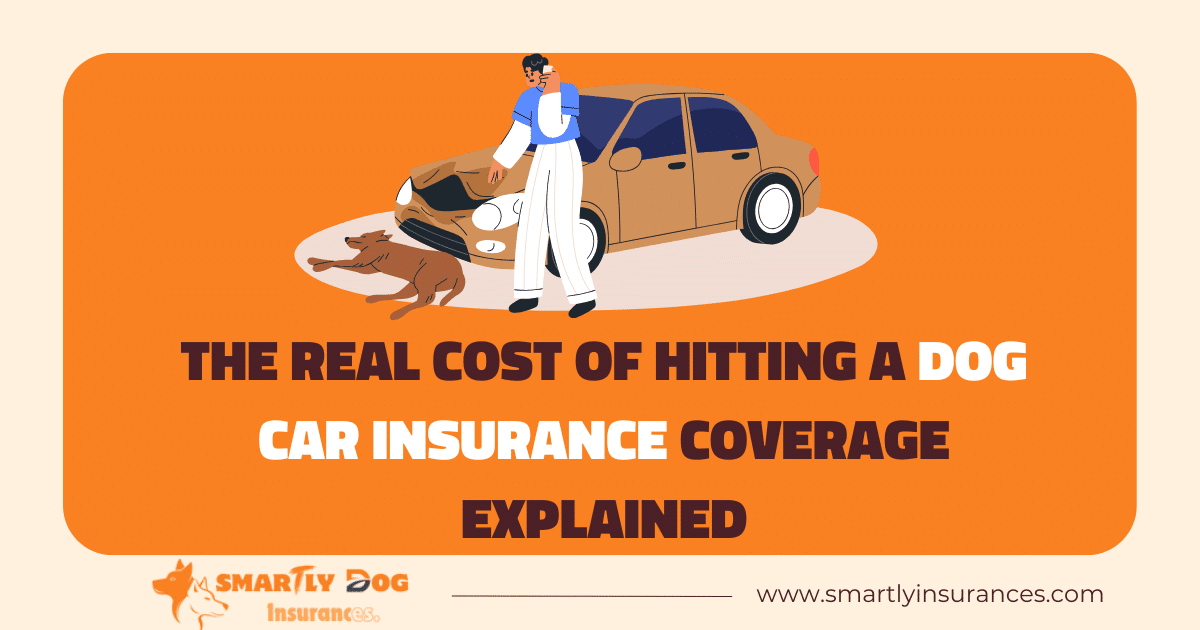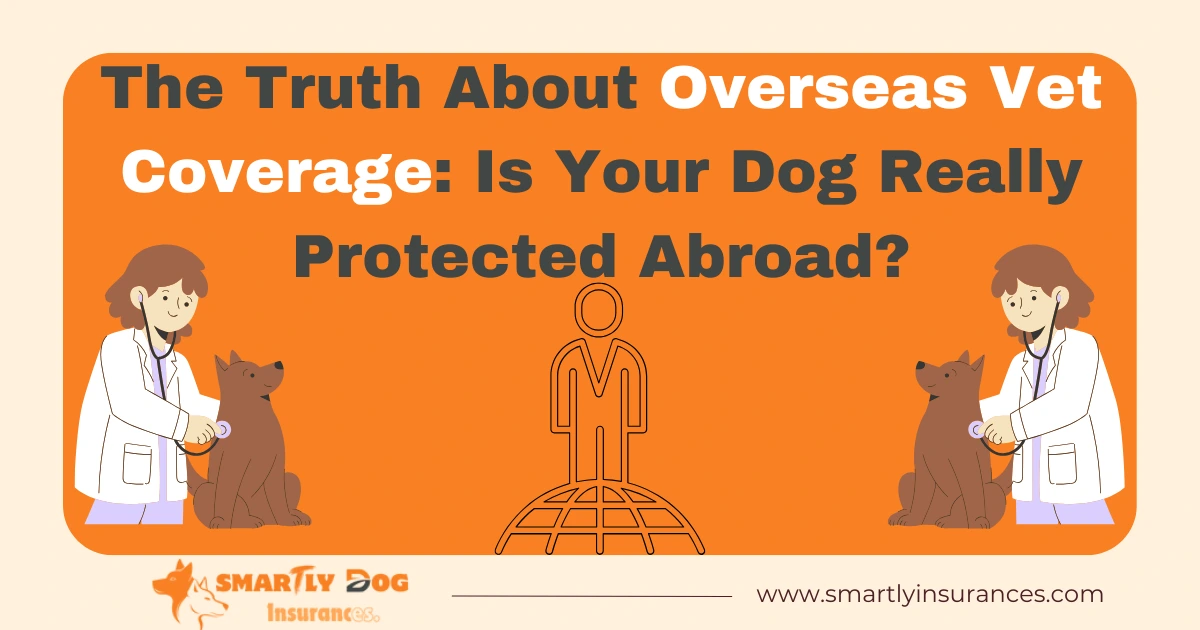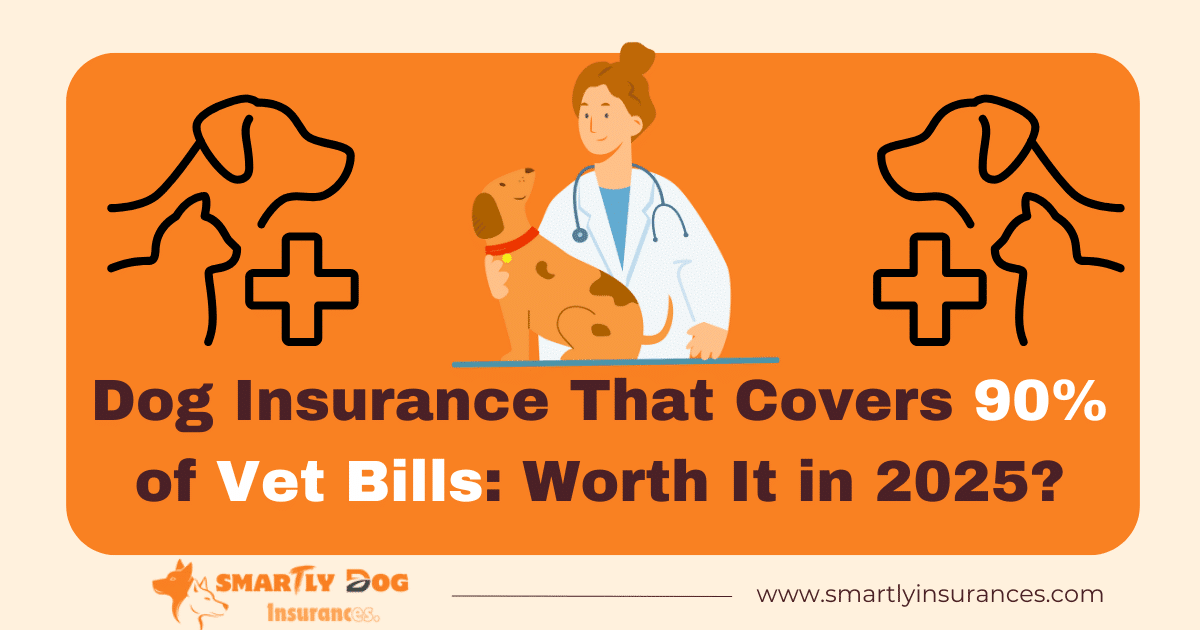A vehicle collision with a dog brings both emotional trauma and potential legal issues. Car insurance typically covers hitting a dog through comprehensive coverage that pays for vehicle damage, but the situation goes beyond a simple insurance claim.
Most states classify pets as personal property. Drivers who leave the scene after hitting a dog might face animal cruelty charges. You need to understand what happens after hitting a dog, your duty to stop and report the whole ordeal, and the financial impact on everyone involved. Pet insurance costs average $53.34 monthly for dogs. This makes it significant to know your responsibilities and coverage options to protect yourself while helping injured animals.
You’ll find all essential information about insurance coverage, legal requirements, and financial duties when accidents with dogs occur.
What Happens When You Hit a Dog
A dog-vehicle collision creates devastating force – a 10-pound dog in a 50-mph crash exerts 500 pounds of force. The force jumps to 2,400 pounds when an 80-pound dog collides at just 30-mph.
Original impact assessment
Studies reveal that dogs have a good chance of surviving vehicle collisions, with only 12.5% resulting in fatalities. About 70% of dogs need immediate medical care after getting hit by vehicles. Dogs usually go into shock right after the impact, which makes their behavior unpredictable and they might become aggressive.
Safety considerations
You need extreme caution when assessing these situations. Dogs under trauma become defensive and might bite out of fear and pain – this applies even to friendly pets. 64% of drivers report getting distracted by pets in their vehicles, which makes accidents more likely.
Common injuries to vehicle
The main vehicle damage happens at the collision point and affects:
- Front bumper and grille assembly
- Hood and windshield especially when you have larger dogs
- Undercarriage components
- Side panels during swerving incidents
The dog’s size and impact speed determine how bad the vehicle damage gets. Drivers who brake suddenly or swerve to avoid dogs often end up in secondary accidents. Pets can turn into projectiles during crashes, which causes more damage to both the vehicle and its occupants.
Immediate Steps After Hitting a Dog
Pull over safely as your first vital step after hitting a dog. Turn on your hazard lights and move your vehicle to a safe spot on the roadside.
Securing the accident scene
Check yourself and your passengers for injuries. Stay in your vehicle if traffic conditions make it unsafe to get out. Exercise extreme caution near the injured animal because even friendly dogs may bite when hurt or scared.
A conscious but injured dog needs a calm, encouraging voice – avoid direct eye contact. Use a blanket to secure the animal and prevent it from running into traffic and causing more accidents. If the dog runs away, stay safe and don’t chase it into traffic.
Contacting authorities
Call emergency services or animal control right away for professional help. You need to provide:
- Your name and address
- Driver’s license number
- Insurance policy details and expiration date
Look for the owner’s contact information on the dog’s collar or tag. Local law enforcement or animal control can help through their non-emergency number if you can’t reach the owner. Note that taking an injured animal into your care means you’re responsible for its medical treatment.
The police will:
- File an official report
- Help manage traffic safety
- Coordinate with animal control
- Document the scene for insurance purposes
Contact your insurance company about the whole ordeal, especially if your vehicle has damage. Documentation shows you handled the situation responsibly, even if the dog seems unharmed.
Legal Requirements and Responsibilities
Legal requirements after hitting a dog vary by a lot from state to state. We focused on reporting rules and damage to property. Pets are classified as personal property under the law, and this affects how people handle these situations.
State-specific laws
You need to stop and report when you hit someone’s pet in most states. To cite an instance, California drivers must tell local agencies or animal control right away. Utah’s law takes this further and says drivers must help the animal and stay until officials get there.
Hit and run consequences
The law takes it seriously if you leave after hitting a dog. You could face criminal charges if you don’t stop, including:
- Animal cruelty charges
- Property damage violations
- Hit-and-run penalties
More than that, you might have to pay for the pet’s value if the crash happened because you weren’t careful enough. The law usually lets people make claims based on how much each person is at fault.
Documentation needed
Here’s what you need to document:
- A report from police or animal control
- Your contact details
- Insurance information
- Pictures showing vehicle damage
- Statements from witnesses
Whatever caused the accident, you must file a police report if damage costs more than $1,000. These documents are vital evidence for insurance claims and legal cases. The report helps cities track where animals get hit by cars, which helps make roads safer.
Insurance Coverage Details
Complete auto insurance protects you financially after hitting a dog. While collision coverage deals with vehicle-to-vehicle accidents, complete coverage takes care of animal-related incidents.
Complete coverage benefits
Your complete auto policy covers:
- Vehicle repairs beyond your deductible amount
- Damage from swerving to avoid the animal
- Total loss compensation if the vehicle is irreparable
- Medical payments through Personal Injury Protection (PIP)
Complete coverage remains optional in most states, but lenders usually require it for financed vehicles. Deductibles range from $250 to $2,000, and higher deductibles lead to lower monthly premiums.
Filing a claim process
You should contact your insurance provider right after securing the accident scene to start the claims process. You will need to provide:
- Detailed accident documentation
- Photos of vehicle damage
- Police or animal control report
Your insurance company can seek compensation from the dog owner’s homeowner’s insurance through subrogation. Insurance companies handle these negotiations directly, so you won’t need to take any additional steps.
Pet owners’ homeowner’s insurance policies usually cover damages caused by their pets, according to the Insurance Information Institute. This means you can pursue a case against the pet owner directly if you don’t have complete coverage.
Financial Impact Beyond Insurance
The financial burden of hitting a dog goes way beyond the reach and influence of simple insurance claims. Vehicle collisions with animals lead to costs around $6,126 per incident, while property damage alone averages $2,451.
Out-of-pocket expenses
Insurance deductibles are just the start. Drivers typically pay about $500 for towing and accident investigation services. On top of that, emergency vet care bills can soar to $5,000 or more to cover diagnostic tests, imaging, surgery, and hospital stays. Drivers might end up paying these vet bills if they cannot find the dog’s owner.
Long-term cost considerations
The financial effects last much longer than the original incident. Property damage claims typically reach $1,840, and medical expenses can hit $2,702. Drivers also face these additional challenges:
- Their claim-free insurance discounts disappear
- Insurance premiums jump by $840 yearly for at-fault accidents
- They need to pay for transportation during vehicle repairs
- They lose wages from missing work
Legal fee possibilities
Legal costs can pile up faster when pursuing or defending claims. A lawyer’s work typically involves:
- Case merit evaluation through initial consultations
- Insurance claim filing and settlement negotiations
- Complete damage calculations
- Court representation
Drivers often need compensation for various damages, including emotional distress, property damage, and extra costs like transportation to vet facilities. Having complete insurance coverage is vital, since drivers without it usually face huge out-of-pocket expenses.
Hitting a dog creates effects that go way beyond the reach and influence of the first collision. This affects both your emotional state and wallet. Your comprehensive auto insurance helps with vehicle repairs. The costs can get pricey and exceed simple coverage limits. Drivers must know their legal duties to stop, report, and help injured animals.
The average incident cost of $6,126 shows why proper insurance coverage is crucial. Drivers who lack comprehensive coverage must pay substantial costs themselves. These range from immediate vet bills to legal fees. Insurance premiums go up and lost discounts can hurt your budget for years after the whole ordeal.
Safety comes first in these situations. You need to document everything carefully and report it right away. Each state has specific rules you must follow. This protects both you and the injured animal. The situation can be stressful, but a calm approach and proper steps help reduce what it all means while ensuring the injured animal gets care.
Drivers who understand these duties beforehand react better and avoid mistakes that get pricey. The right insurance protection matters – whether through comprehensive auto coverage or extra liability protection. This safeguards you against unexpected animal encounters on the road.



